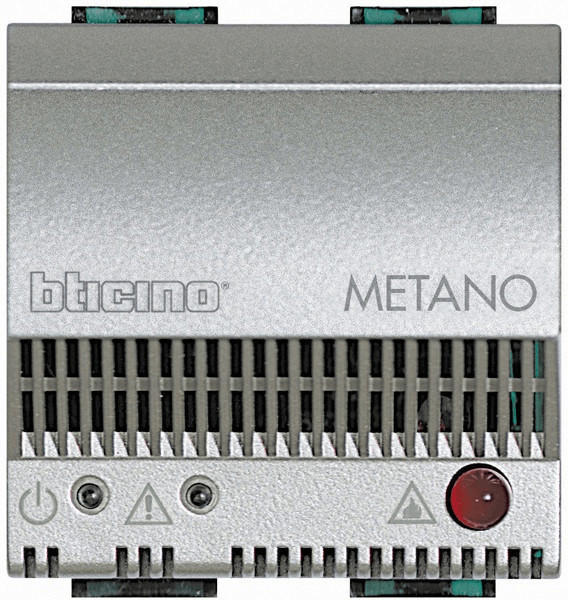Smoke Alarms Guide
Type (ionization, photoelectric, dual)
There are three main types of smoke alarms on the market: ionization, photoelectric, and dual-sensor alarms.
Ionization smoke alarms are effective at detecting flaming fires that spread quickly. They consist of a small amount of radioactive material that ionizes the air, creating an electric current. These alarms are more responsive to high-energy fires and may have a faster response time. For instance, the First Alert Dual-Sensor smoke and fire alarm utilizes ionization technology to detect fast-flaming fires and is equipped with a convenient Silence/Test button.
On the other hand, photoelectric smoke alarms are better at sensing slow and smoldering fires. These alarms use a light source and a light-sensitive sensor. When smoke particles from a smoldering fire enter the chamber, they scatter the light beam onto the sensor, triggering the alarm. A reliable option is the Kidde i4618AC wire-in smoke alarm, which employs photoelectric technology for quick detection of slow-burning, smoldering fires.
Lastly, dual-sensor alarms combine both ionization and photoelectric technologies, offering comprehensive coverage against different types of fires. The First Alert BRK 3120B smoke alarm is an excellent example of a dual-sensor alarm, combining the benefits of both types to provide a high level of protection. It features a fully enclosed chamber that helps reduce nuisance alarms and a battery backup to ensure uninterrupted functioning.
Certifications (UL, ETL, NFPA)
Look for smoke alarms that are certified by reputable organizations such as UL (Underwriters Laboratories), ETL (Intertek), or NFPA (National Fire Protection Association). These certifications ensure that the smoke alarms have undergone rigorous testing and meet the highest safety standards.
For example, the Kidde 21026043 is a smoke alarm with a UL certification. It features a photoelectric sensor that quickly detects slow, smoldering fires and emits a loud 85 dB alarm. Another option is the First Alert BRK 3120B, which has dual ionization sensors and is UL certified. It detects both flaming and smoldering fires and includes a 10-year sealed lithium battery for long-lasting protection.
In terms of the ETL certification, the Kidde 468094 is highly recommended. It features a 10-year sealed lithium battery and can interconnect with up to 24 smoke alarms for a comprehensive warning system. Similarly, the First Alert P1010 is an ETL certified smoke alarm with a 10-year sealed battery, making it a durable and reliable choice for any home.
For certifications from NFPA, the Kidde i9010 is an excellent option. It is NFPA 72 certified and uses a non-replaceable 10-year sealed battery. It also includes a hush feature to easily silence nuisance alarms. Another NFPA certified smoke alarm is the First Alert SA320CN, which boasts an advanced ionization sensor and a 10-year sealed backup battery.
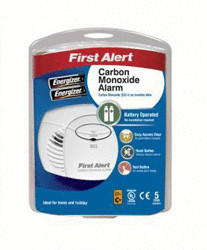
These examples highlight the importance of considering certifications when selecting smoke alarms, ensuring that you are choosing a product that has met stringent safety guidelines.
Sensing technology
Different sensing technologies help detect different types of fires, providing varying levels of protection. There are two main types of sensing technology commonly used: ionization and photoelectric.
Ionization smoke alarms are designed to efficiently detect fast flaming fires, which occur when combustible materials ignite quickly and rapidly spread. These alarms operate by ionizing the air inside the alarm chamber. As smoke enters the chamber, the ionized air is disrupted, altering the electric current and triggering the alarm. If you are looking for an ionization smoke alarm, consider the First Alert SA303CN3 Ionization Smoke Alarm or the Kidde i9040 Ionization Sensor Smoke Alarm.

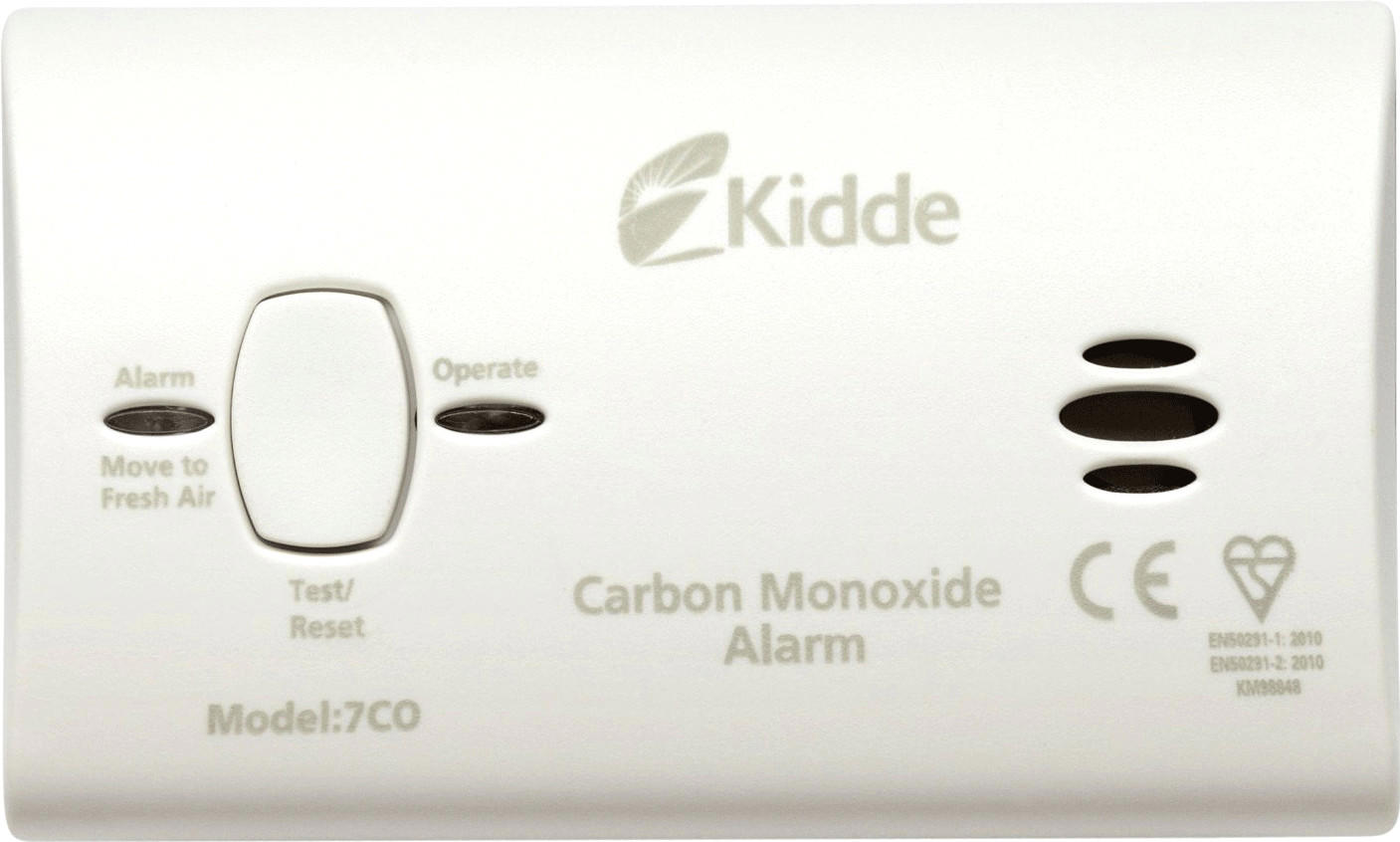
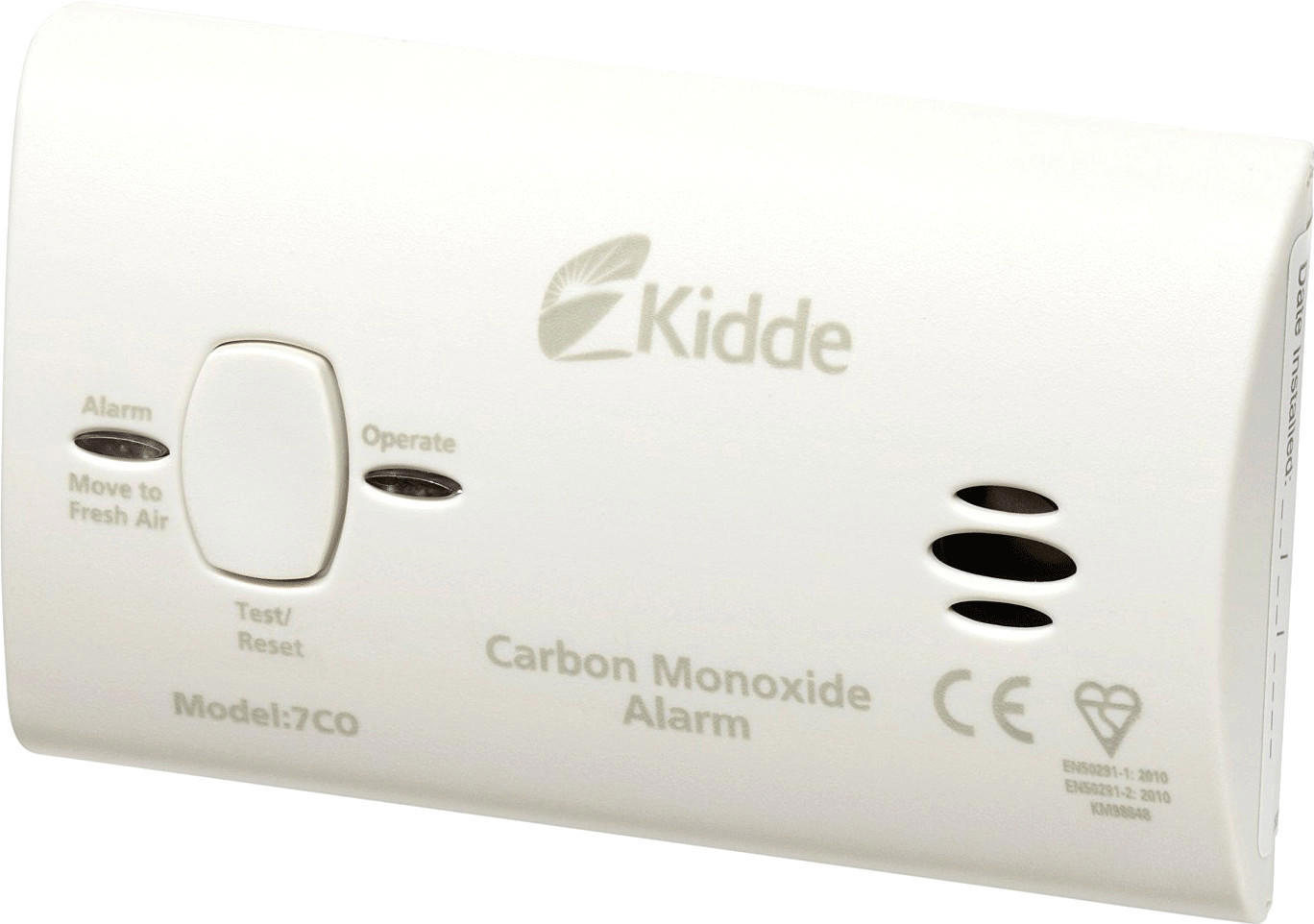
On the other hand, photoelectric smoke alarms are effective in detecting slow smoldering fires, where combustible materials slowly burn over an extended period. These alarms use a light source and a photosensitive sensor to measure the presence of smoke particles in the air. When smoke enters the chamber, the light beam is scattered onto the sensor, triggering the alarm. If you prefer a photoelectric smoke alarm, the First Alert SA304CN3 Photoelectric Smoke Alarm or the Kidde PE9 Photoelectric Sensor Smoke Alarm are recommended choices.


Power source (battery operated, hardwired)
There are two main options available: battery operated and hardwired smoke alarms. Battery operated smoke alarms are the most common and widely used type, offering easy installation and flexibility in placement. They are usually powered by long-lasting batteries, like the First Alert Smoke Detector and Carbon Monoxide Alarm which utilizes a 10-year sealed battery to provide continuous protection without the need for battery replacement. On the other hand, hardwired smoke alarms are directly connected to the electrical wiring of the house, ensuring a consistent power supply. These alarms often come with battery backup to ensure they continue functioning in case of a power outage, such as the Kidde Hardwire Smoke Detector Alarm.

Interconnectivity (wired or wireless interconnection)
Interconnected smoke alarms provide an additional layer of safety by enabling simultaneous activation when one alarm detects smoke.
Wired interconnection involves connecting the smoke alarms using electrical wires, typically found in new constructions or when a whole-house interconnected system is installed. One reliable option is the First Alert BRK 9120B Hardwired Smoke Alarm, which offers the ability to interconnect up to 18 compatible devices, ensuring that a potential fire is detected throughout the entire home.
On the other hand, wireless interconnection eliminates the need for complex wiring and allows for easier installations in existing homes. The Kidde Wireless Smoke Detector is an example of a wireless interconnect system that operates using radio frequency signals. This smoke alarm can interconnect with up to 24 devices, providing a comprehensive and reliable warning system for your home.
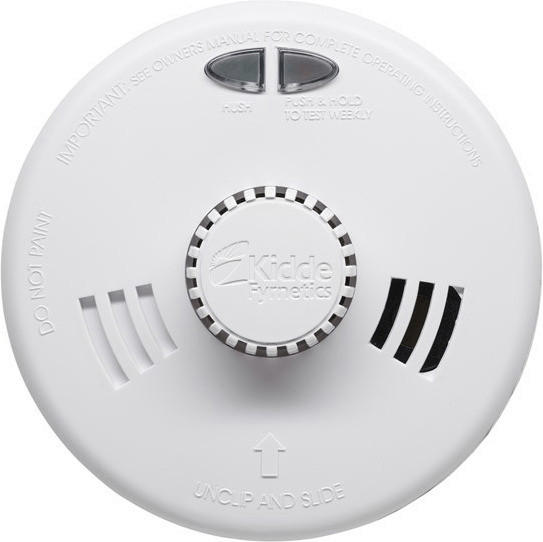
By considering the interconnectivity feature, you can choose the best type of smoke alarm that suits your specific needs and enhances the safety of your home. Other products in the market may also offer wired or wireless interconnection options, so be sure to review their specifications when making your decision.
Alarm sound level
It is crucial for the alarm to have a loud and distinct sound that can wake up even the heaviest sleepers. Look for smoke alarms that have a decibel rating of at least 85 dB or higher. This ensures that the alarm can be heard from various parts of the house, especially in bedrooms that are located far away from the kitchen or living room.
One option to consider with a high sound level is the First Alert Smoke Detector and Carbon Monoxide Detector Alarm. With a sound level of 85 dB, this alarm provides a reliable and audible alert in case of a fire. Another option is the Kidde Battery Operated Smoke Alarm, which produces a loud 85 dB alarm to ensure maximum safety. For those seeking an even higher sound level, the Kidde Hardwire Smoke Alarm with Battery Backup features a 91 dB alarm sound level, ensuring that it can be heard in any room of the house.

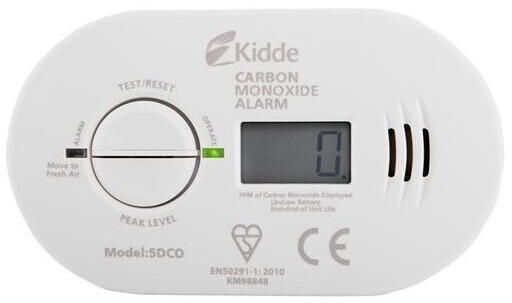
Battery life
Opting for a smoke alarm with a longer battery life can provide added peace of mind, ensuring that your alarm will function reliably for an extended period without frequent battery replacements. For example, the First Alert BRK 3120B Smoke Alarm boasts a battery life of up to 10 years, eliminating the need for regular battery changes. Similarly, the Nest Protect Smoke Alarm utilizes a long-lasting lithium-ion battery that is designed to last for up to 10 years, ensuring that it will operate efficiently for an extended period. Remember, prioritizing devices with longer battery life can reduce the inconvenience of constantly maintaining and replacing batteries in your smoke alarms.

Backup battery
This ensures that the alarm remains operational even in case of a power outage. Many smoke alarms rely on 9V alkaline batteries as backup power. For example, the First Alert SA303CN3 smoke alarm boasts a 9V backup battery that ensures continuous protection in the event of an electrical failure. Another notable option is the Kidde 21026043 smoke alarm, which is equipped with a long-life 9V lithium ion battery. This lithium battery offers a significantly longer lifespan compared to traditional alkaline batteries, providing reliable backup power for extended periods during power outages or when the main battery is depleted.
It is worth mentioning that some smoke alarms also offer the option of dual sensing technology, combining both ionization and photoelectric sensors for superior smoke detection capabilities. The First Alert BRK 9120B smoke alarm employs this dual sensing technology alongside a 9V backup battery, making it an excellent choice for enhanced protection in various environments. Additionally, certain units like the Nest Protect integrate WiFi connectivity, sending alerts directly to mobile devices along with the 6V lithium-ion battery backup storage. These advanced features ensure your smoke alarm remains functional and also provides easy access to emergency notifications even during power interruptions.

Hush button (ability to silence nuisance alarms)
This is especially useful in situations where cooking or steam from showers can trigger false alarms. One reliable option is the First Alert SA320CN Dual-Sensor Smoke and Fire Alarm. It features a Hush button that allows you to temporarily silence false alarms for up to 9 minutes, while still ensuring protection in case of a real emergency.
Another Hush-enabled smoke alarm is the Kidde i9040 Fire Sentry Compact Smoke and Fire Alarm. This compact and affordable alarm includes a Hush button that can be active for up to 10 minutes. With its Hush feature, you can confidently silence annoying false alarms without compromising the safety of your home.
While some smoke alarms on the market come without a Hush button, there is an array of options available that prioritize this essential feature. Don't forget to check the user manual or the product specifications to understand the specific functionalities of the Hush button on each smoke alarm.
Test button
This feature allows you to regularly check if the alarm is functioning correctly and if the battery is still operational. One example of a smoke alarm that includes a Test button is the Nest Protect Smoke and Carbon Monoxide Alarm. This intelligent device not only detects smoke and carbon monoxide, but also sends alerts to your smartphone, making it convenient and ensuring the safety of your home. Another option is the First Alert BRK 3120B Hardwired Smoke Alarm. This alarm features a test button that allows you to easily check its functionality, and its hardwired design ensures a reliable and long-lasting power source. By selecting a smoke alarm equipped with a Test button, you can regularly ensure the effectiveness of the alarm and increase the overall safety of your home or office.
Alarm indicator light
This light serves as a helpful visual cue, especially in areas where the sound of the alarm might not be easily heard, such as for individuals with hearing impairments or noisy environments. For instance, the 'First Alert SA320CN' smoke alarm, with its innovative alarm indicator light, provides a clear visual signal when it's in operation. Similarly, the 'Kidde KN-COSM-IBA' smoke and carbon monoxide alarm features a red LED light that flashes every 30-40 seconds, detailing that the unit is working correctly. By selecting a smoke alarm with an indicator light, you can ensure the safety of your household effectively.

Low battery indicator
This feature is essential as it alerts you when the battery is running low, ensuring that your smoke alarm operates efficiently at all times. A smoke alarm with a low battery indicator not only guarantees that you are consistently protected, but it also eliminates the hassle of having to guess when to replace the battery. Some highly recommended options with this feature include the Nest Protect 2nd Gen, which utilizes a Split-Spectrum Sensor to detect both fast and slow-burning fires, and the First Alert BRK 9120B, which features dual sensors to easily detect both smoldering and flaming fires. These smoke alarms are equipped with prominent low battery indicators, offering peace of mind and easy maintenance.
It is worth noting that smoke alarms can be categorized into different segments based on their power sources. For those looking for battery-powered options, examples to explore include the Kidde Sealed Lithium Battery Power Smoke Detector Alarm, which boasts a 10-year battery life, eliminating the need for frequent battery replacements, and the First Alert 10-Year Battery-Powered Photoelectric Smoke Alarm, which also provides a long-lasting, hassle-free battery life. Alternatively, there are also hardwired smoke alarms available such as the First Alert Hardwired Smoke Detector that provide a continuous source of power without relying solely on batteries. For added convenience, some models even offer a combination of battery and hardwired power options, ensuring uninterrupted protection in the event of a power outage, such as the Kidde Combination Smoke/Carbon Monoxide Alarm.



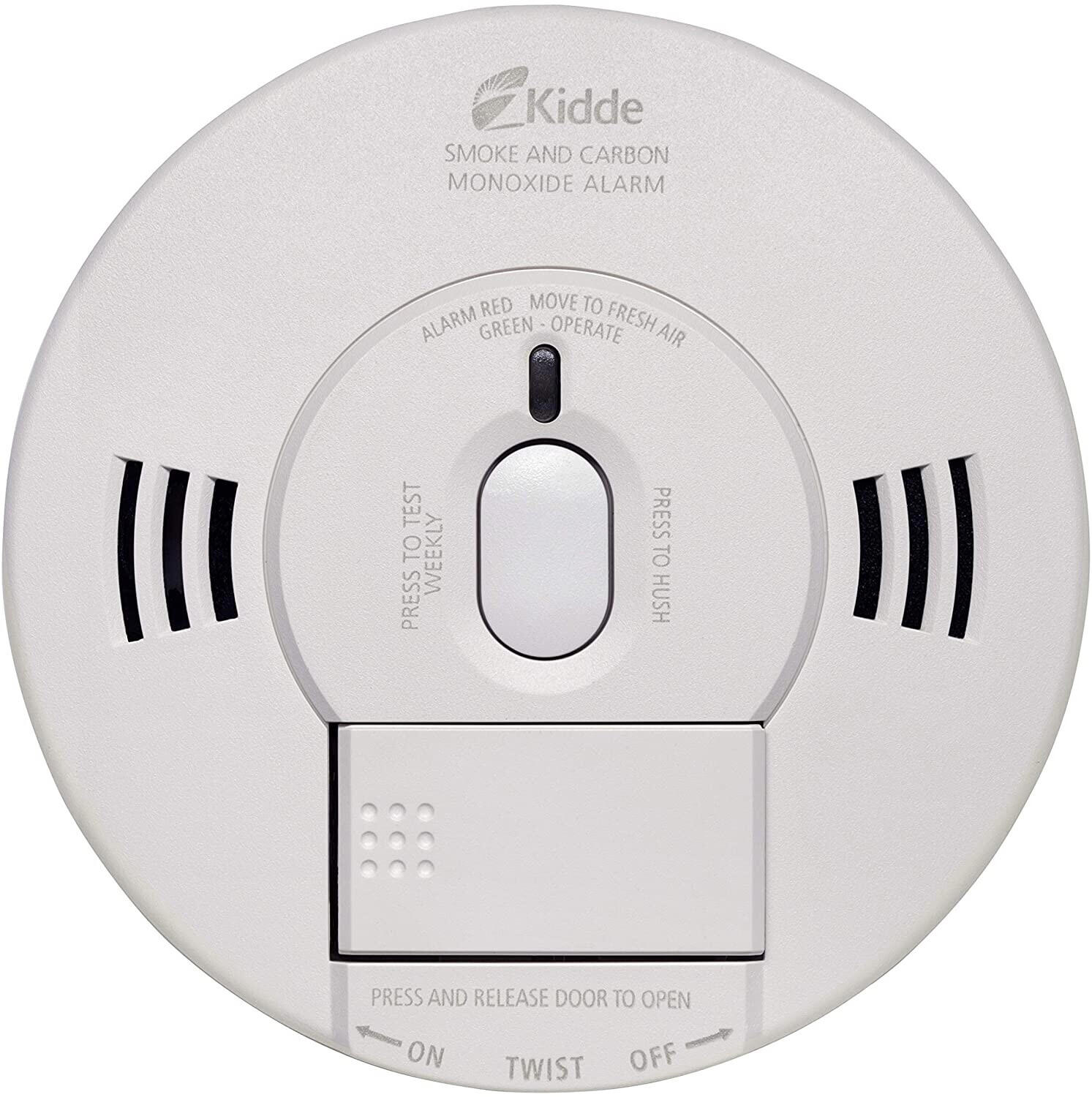
Interconnectivity with other brand models
Interconnected smoke alarms provide a greater level of safety by allowing all alarms in your home to sound simultaneously when one detects smoke or fire. This ensures that everyone in your home can quickly respond and evacuate in case of an emergency.
One product that offers excellent interconnectivity options is the First Alert BRK 9120B Hardwired Smoke Detector. This smoke alarm can easily be interconnected with up to 18 compatible devices, providing comprehensive coverage for larger homes. Featuring an easy-to-use latching alarm indication, it gives you peace of mind knowing which unit initiated the alarm. Additionally, the Nest Protect (2nd Gen) is a smart smoke and carbon monoxide alarm that can connect wirelessly with other Nest products. It allows for interconnectivity beyond smoke alarms, alerting you through your smartphone and providing intelligent alerts to keep you informed in any situation.


End of life warning
This feature provides timely notifications when the alarm's sensors are nearing the end of their useful life, ensuring optimal performance and safety. One example of a smoke alarm with an end of life warning is the First Alert Smoke Detector and Carbon Monoxide Detector Alarm. It features an advanced electrochemical CO sensor that accurately detects the presence of carbon monoxide. Additionally, it provides an end of life warning to replace the device after ten years of use. Another option is the Kidde Hardwire Smoke Alarm, which not only has a built-in end of life warning but also features an ionization sensing technology that quickly identifies both fast and slow burning fires. These smoke alarms serve as excellent choices for individuals seeking reliable and long-lasting protection in their homes. Other products in the market that offer similar end of life warning features include the Nest Protect Smoke and Carbon Monoxide Alarm and the BRK Brands Hardwired Smoke Alarm.

Advanced sensors for detecting different types of fires (smoke, fire, carbon monoxide)
One excellent example of a smoke alarm with advanced sensors is the Nest Protect Smoke and Carbon Monoxide Alarm. This smart alarm uses a Split-Spectrum Sensor, which is designed to sense both fast-burning and smoldering fires. It can quickly distinguish between smoke and steam, reducing false alarms. Additionally, the Nest Protect is equipped with a carbon monoxide sensor that continuously monitors for this silent, potentially deadly gas. Another option is the First Alert 2-in-1 Z-Wave Smoke Detector & Carbon Monoxide Alarm. This alarm not only detects smoke but also has a built-in electrochemical carbon monoxide sensor. It can wirelessly connect to compatible smart home devices, providing even more convenience and peace of mind.
Group 1: Smoke Alarms with Advanced Detection Sensors
- Nest Protect Smoke and Carbon Monoxide Alarm
First Alert 2-in-1 Z-Wave Smoke Detector & Carbon Monoxide Alarm
Group 2:
- List other products in this category

Carbon monoxide detection capability
Carbon monoxide is a toxic gas that is odorless and colorless, making it extremely dangerous. Look for a smoke alarm that also functions as a CO alarm in order to ensure full protection for your family. One example is the 'Nest Protect' smoke and CO alarm. It detects both fast-burning and smoldering fires, as well as levels of CO that can be harmful to humans. Another option is the 'First Alert Combination Smoke and Carbon Monoxide Alarm', which also detects both smoke and CO. It has a long lifespan of 10 years and a digital display that shows the level of CO detected. These alarms use advanced sensors to accurately detect carbon monoxide, providing valuable peace of mind.



Heat sensor
A heat sensor is specifically designed to detect a rapid rise in temperature, which is often caused by a fire. This type of sensor is particularly useful in kitchens, garages, and attics, where smoke from cooking or dust may trigger false alarms in smoke detectors. One excellent example of a smoke alarm with a heat sensor is the 'First Alert Heat Detector'. This alarm is equipped with a fixed temperature sensor that triggers an alarm when the ambient temperature reaches over 135°F (57.2°C). Another highly recommended option is the 'Kidde Hardwire Heat Alarm', which uses an advanced thermistor-based circuitry to detect high temperatures and alert occupants even before smoke is present. These heat sensors provide an added layer of protection in areas where regular smoke alarms may not be suitable.
Visual alarm detection
This feature allows individuals who are visually impaired or have hearing impairments to be alerted in the event of a fire. One excellent product that offers this feature is the First Alert 9120LB Hardwired Smoke Alarm. With a bright strobe light that provides a visual indicator, it ensures that everyone in your household is immediately aware of a potential fire hazard. Another great option is the Kidde KN-COSM-IBA Hardwired Smoke and Carbon Monoxide Alarm. This unique combination detector not only includes a visual alarm detection feature but also effectively detects the presence of both smoke and carbon monoxide.
Alternatively, smoke alarms with visual alarm detection can be categorized into different groups. One such group is photoelectric smoke alarms, which are particularly sensitive to visual smoke particles. Products in this group include the Kidde PE100 Smoke Alarm and the First Alert SA303CN3 Battery Powered Smoke Alarm. Another group is interconnected smoke alarms, where multiple alarms throughout the house are connected. Examples of visual alarm detection options in this group include the Kidde i4618 Firex Hardwired Smoke Alarm and the First Alert BRK SC9120B Smoke and Carbon Monoxide Alarm. These options not only provide visual alarm detection but also offer the benefit of interconnecting all alarms, ensuring that when one goes off, all alarms in the network will as well.


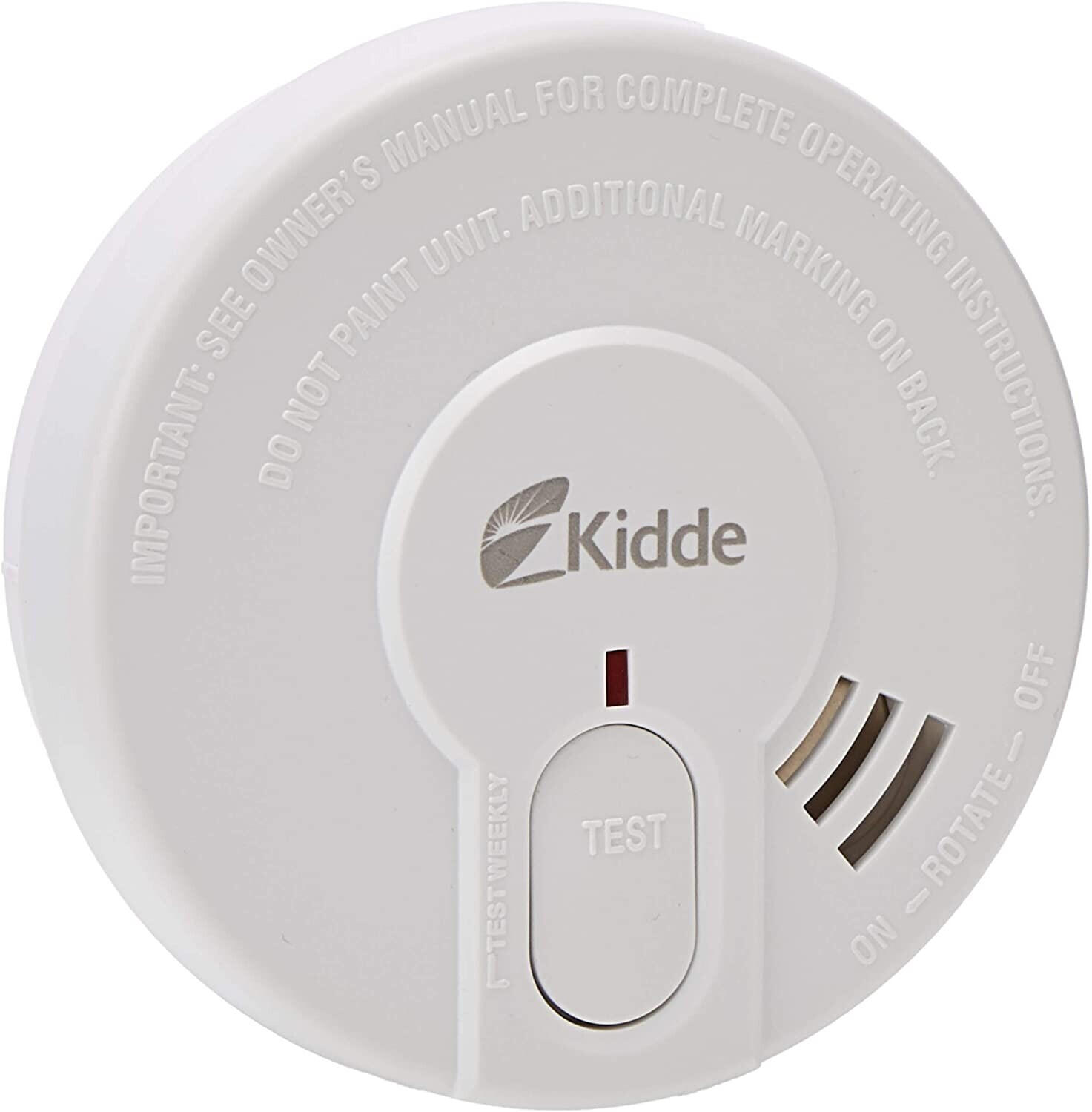
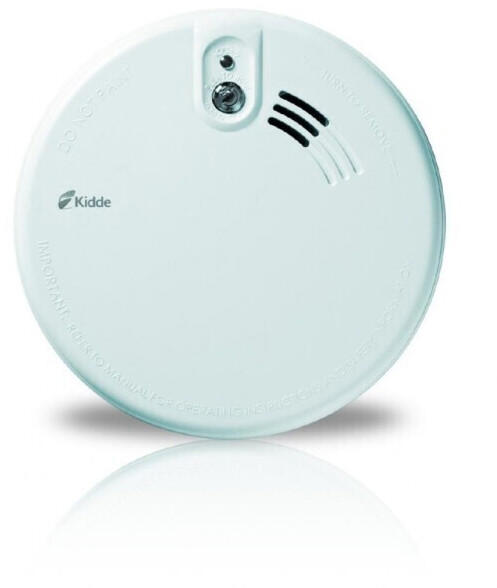
Smart capabilities (app connectivity, voice alerts)
These features not only provide convenience but also enhance the overall safety of your home. One great example of a smoke alarm with smart capabilities is the Nest Protect. This device connects to your home's Wi-Fi and sends alerts to your smartphone, allowing you to receive notifications and check the status of your alarms remotely. It also has voice alerts that clearly state the type and location of the danger, ensuring that you are immediately informed about potential risks. Another option is the First Alert Onelink Safe & Sound, which not only functions as a smoke alarm but also doubles as a smart speaker with built-in Amazon Alexa. This unique combination allows you to control your smart home devices, play music, and receive voice alerts for smoke and carbon monoxide alerts. It even has a nightlight feature that can be controlled through a mobile app.

False alarm prevention features
False alarms can be a nuisance, causing unnecessary panic or disruption, and it is essential to choose a smoke alarm that can minimize these occurrences. One example of a smoke alarm with advanced false alarm prevention features is the Nest Protect Smoke and Carbon Monoxide Alarm. This smart alarm uses a combination of heat, smoke, and carbon monoxide sensors to differentiate between real emergencies and common cooking events. It also includes a Split-Spectrum Sensor, which can detect both fast and slow-burning fires, reducing the chances of false alarms. Additionally, the Nest Protect Smoke and Carbon Monoxide Alarm can be connected to a smartphone and provide alerts and notifications, allowing homeowners to quickly respond to potential dangers without unnecessary panic.
Size and design
Many manufacturers offer compact and modern designs that blend effortlessly with any decor. For instance, the First Alert 0827B smoke alarm is a sleek and slim option that can be easily mounted on the ceiling. Its low-profile design prevents it from being obtrusive and provides a discreet way to enhance safety.
Additionally, some smoke alarms come in various sizes to cater to different needs. One notable example is the Kidde PI2010 Dual Sensor smoke alarm, which features a compact size for easy installation, making it ideal for smaller spaces. On the other hand, the Nest Protect stands out with its unique design, combining smoke and carbon monoxide detection in a single device, further enhancing safety. Remember, the size and design of smoke alarms play a crucial role in ensuring that your chosen device not only provides effective protection but also seamlessly integrates into your surroundings.


Mounting options (ceiling, wall)
The most common mounting options for smoke alarms are ceiling-mounted and wall-mounted. Ceiling-mounted smoke alarms are generally preferred as they have the ability to quickly detect smoke that rises and spreads across the ceiling. When it comes to ceiling-mounted options, the 'Kidde i12020' and the 'First Alert BRK 9120B' are excellent choices. Both models offer a dual-sensor design, combining ionization and photoelectric technologies to maximize their smoke detection capabilities.
On the other hand, wall-mounted smoke alarms are ideal for situations where ceiling mounting is not possible or less effective, such as in vaulted ceilings or where the ceiling is uneven. For wall-mounted options, the 'First Alert BHEC7180BC' and the 'X-Sense SD01' are worth considering. The First Alert BHEC7180BC is a hardwired smoke detector equipped with advanced electrochemical and photoelectric sensors for optimal detection accuracy, while the X-Sense SD01 is a battery-operated smoke detector with a low-profile design, making it suitable for tight spaces. These options provide reliable smoke detection and are well-suited for different mounting preferences.

Ease of installation
Look for smoke alarms that offer straightforward installation processes, reducing the time and effort required to set up the alarm. An example of a smoke alarm known for its easy installation process is the Nest Protect, which boasts a wire-free design that can be easily mounted on the wall or ceiling with the included screws. Additionally, the First Alert 10-Year Sealed Battery Smoke Alarm features a convenient design that requires no wiring thanks to its built-in 10-year lithium battery. With these options, you can quickly and effortlessly install smoke alarms throughout your home for enhanced safety.

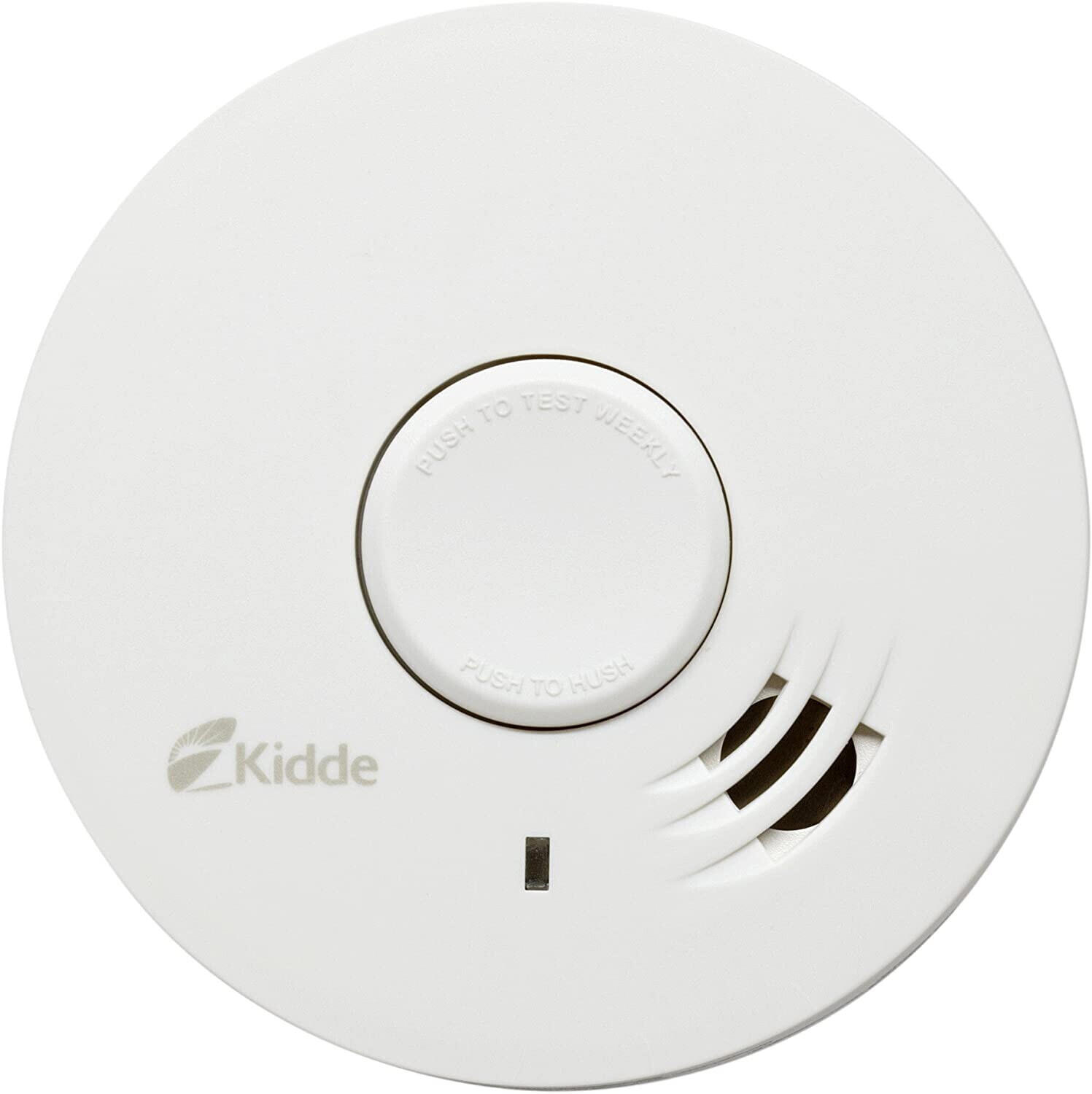
Maintenance requirements
Different smoke alarms may have varying maintenance needs. Some manufacturers recommend monthly testing, while others suggest testing every six months. A good choice for low-maintenance smoke alarms is the Nest Protect which features a self-check mechanism that runs tests automatically, notifying the user if any issues are detected. The Kidde Firex series is another great option, equipped with long-life lithium batteries that provide approximately 10 years of continuous protection without the need for battery replacement. Additionally, consider the First Alert SA320CN which features an easy-access battery compartment, enabling quick battery replacement without needing to remove the entire unit from the ceiling. These smoke alarms offer homeowners peace of mind knowing that they require minimal maintenance while consistently ensuring their safety.


Operating temperature range
This refers to the range of temperatures in which the alarm will remain functional and reliable. It is important to select a smoke alarm that is suitable for the specific environmental conditions where it will be installed, especially if you live in an area with extreme hot or cold temperatures.
Some smoke alarms are specifically designed for high-temperature environments such as kitchens and garages. For example, the First Alert SA304CN3 is a popular smoke alarm that features a operating temperature range of -40°F to 150°F (-40°C to 65°C) and provides reliable performance even in extreme conditions.
Alternatively, if you are looking for a smoke alarm for colder climates, consider the Kidde i9050. This smoke alarm can withstand temperatures as low as -40°F (-40°C), making it suitable for areas with freezing winters. It is important to choose a smoke alarm with an adequate operating temperature range to ensure it will function effectively in your specific environment.
Included mounting hardware
This refers to the hardware provided in the packaging that enables easy installation of the alarm. Some smoke alarms, such as the Nest Protect and First Alert BRK 3120B, include mounting brackets, screws, and anchors, making it convenient for homeowners to securely fasten them to the wall or ceiling. The Kidde KN-COSM-IBA even features an optional tamper-resistant lock that prevents unauthorized removal of the unit once it has been installed. It is important to ensure that the included mounting hardware is suitable for the type of surface where the smoke alarm will be installed, such as wood, drywall, or concrete, to ensure proper installation and functionality. This factor should not be overlooked, as it ensures that your smoke alarm is securely mounted, reducing the risk of it falling down or being dislodged.
Availability of replacement parts
Look for smoke alarms that have easily accessible and replaceable components, such as batteries and sensors, as this ensures hassle-free maintenance and prolonged functionality. Some brands offer products that have easily replaceable components, such as the First Alert SA320CN Dual-Sensor Smoke and Fire Alarm, which allows for quick replacement of batteries and sensors. Another option is the Kidde KN-COSM-IBA Hardwired Combination Smoke and Carbon Monoxide Alarm, which also provides easy access to replaceable sensors and batteries. These products are designed with user convenience in mind, making maintenance and part replacement simple tasks.

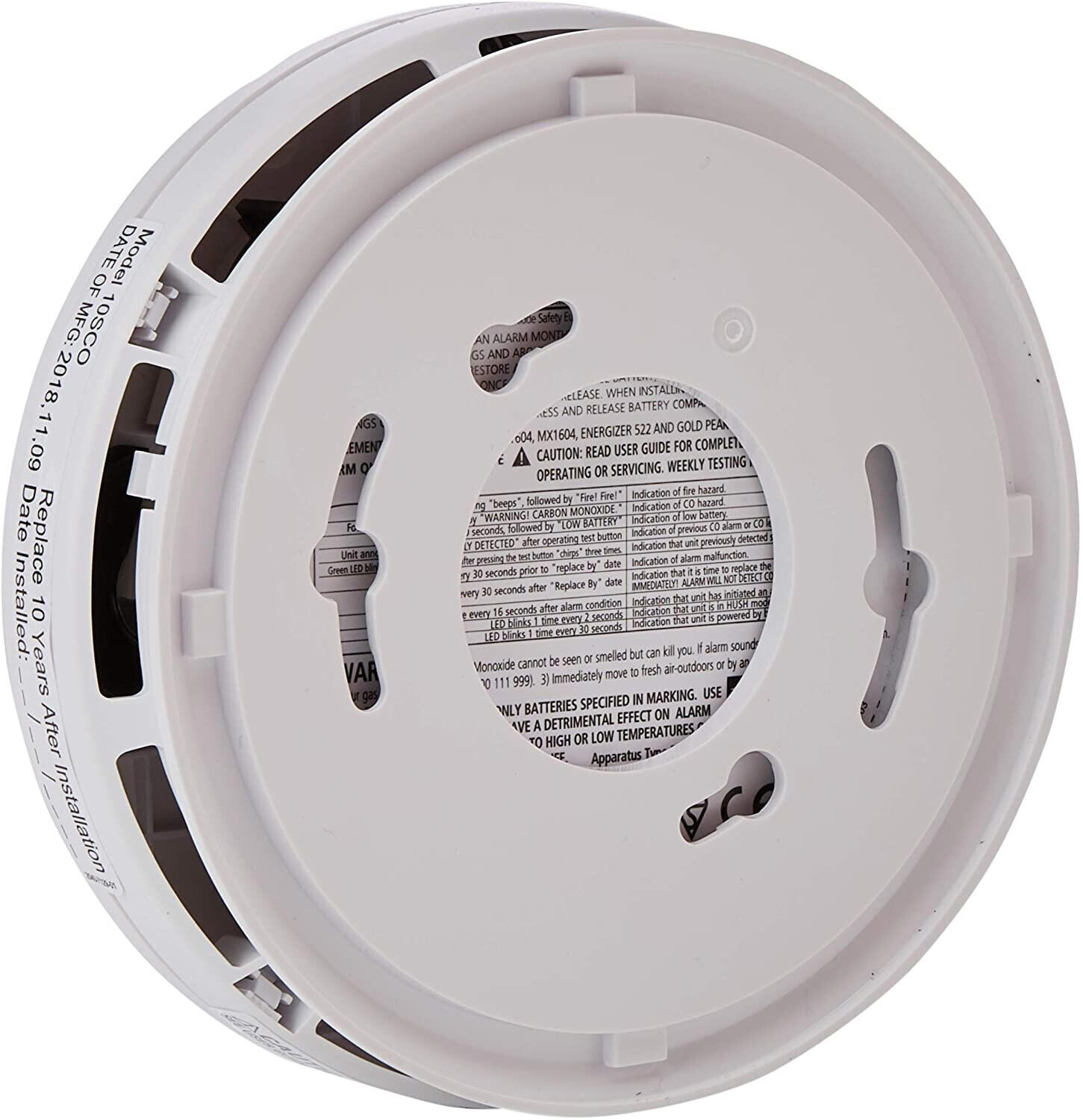
Size of coverage area
This refers to the area within which the smoke alarm is designed to detect smoke. Larger coverage areas are especially crucial for commercial or larger residential spaces. One notable smoke alarm that offers a wide coverage area is the First Alert SA511CN2-3ST. With a built-in photoelectric sensor, it can effectively detect smoke particles within an impressive range of up to 75 feet.
In addition to the First Alert SA511CN2-3ST, there are various smoke alarms available in the market that cater to different coverage needs. Some popular options for smaller areas include the Kidde P3010K-CO which is optimized for kitchens, or the Nest Protect 2nd Generation which covers the complete home with wireless interconnectivity. For larger areas such as commercial buildings or multi-level homes, models like the Kidde hardwire interconnected Ionization Smoke Alarms are ideal, as they are designed to communicate and synchronize with multiple units throughout the space for comprehensive coverage.


Government regulations compliance
In most countries, smoke alarms are required by law to meet certain standards, such as having the Underwriters Laboratories (UL) certification or compliance with the International Electrotechnical Commission (IEC) standards. Some notable options that fulfill these regulations include the Kidde KN-COSM-IBA, which meets both UL and IEC standards, and the First Alert BRK 3120B, which is also UL certified. These models, along with a variety of others, fall under the category of smoke alarms that comply with government regulations, ensuring their reliability and quality.
Response time to detected emergencies
This refers to how quickly the alarm reacts and alerts you in the event of a smoke or fire. Look for smoke alarms that are equipped with advanced sensing technologies, such as photoelectric or dual-sensor detection. These types of alarms have been proven to have faster response times compared to traditional, ionization-based alarms.
One product that excels in this area is the First Alert PR710 photoelectric smoke alarm. With its advanced photoelectric sensing technology, this alarm boasts a response time that is up to 87% faster than traditional ionization alarms. This means that it can detect smoke and fire much quicker, giving you precious extra time to safely evacuate.
Another option to consider is the Nest Protect 2nd Generation. This smart smoke alarm utilizes both photoelectric and ionization sensors to provide a fast and accurate response to smoke and fire emergencies. It also includes additional features such as smartphone alerts and voice notifications to enhance safety and convenience.

Overall durability and reliability
Look for smoke alarms that are made with high-quality materials and designed for long-term use. One example of a durable and reliable smoke alarm is the First Alert BRK 3120B, which offers dual-sensor technology with both ionization and photoelectric sensors. This alarm provides reliable detection regardless of the type of fire, ensuring maximum safety for your home. Another option to consider is the Kidde P3010CU, which features a 10-year sealed lithium battery and an intelligent sensing technology that differentiates between harmless non-combustion sources and real fires, minimizing false alarms. These smoke alarms offer superior durability and reliability, providing peace of mind to homeowners.
Price
There is a wide range of smoke alarms available on the market, catering to various budgets and needs. For those on a tight budget, the Kidde i9010 smoke alarm is a great option. Priced at around $15, this 10-year sealed lithium battery-powered alarm provides essential protection without breaking the bank. On the mid-range side, the First Alert BRK smoke alarm series offers dependable performance at an affordable price, ranging from $20 to $30. Lastly, for those seeking more advanced features and higher-end options, the Nest Protect smoke alarm would be an ideal choice. Priced at around $100, this smart alarm not only detects smoke but also carbon monoxide and can be conveniently controlled through a smartphone app.

Variety of brands
Each brand offers its own unique set of features, pros, and cons. One popular brand is Nest Protect which boasts advanced sensors and can detect both fast and slow-burning fires. It also provides informative voice alerts and can be remotely monitored and managed through a smartphone app. On the downside, the Nest Protect can be relatively expensive compared to other brands.
Another renowned brand is Kidde, which has been a trusted name in smoke alarms for years. Their Battery-Operated Smoke Alarm is cost-effective and provides reliable detection with a loud 85-decibel alarm. The battery-powered feature offers easy installation without wiring, but it's important to keep in mind that the batteries need to be replaced periodically.


Additionally, some large portions of the market segment their products based on power source. For example, First Alert 10-Year Lithium Power Smoke and Carbon Monoxide Combo Alarm is a combination detector that operates on a sealed 10-year lithium battery, eliminating the need for battery replacements. On the other hand, Kidde Hardwired Interconnected Smoke Alarm with Battery Backup is designed to be hardwired into your home's electrical system and comes with a battery backup for uninterrupted protection in case of power outages. It's crucial to determine which power source is most suitable for your needs and preferences when exploring different brand options.
